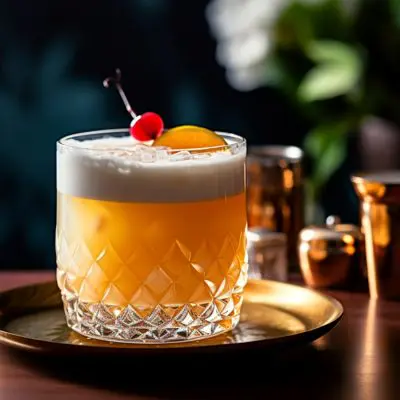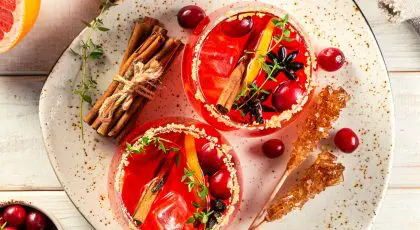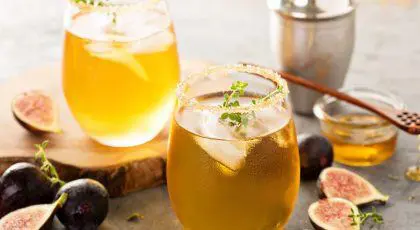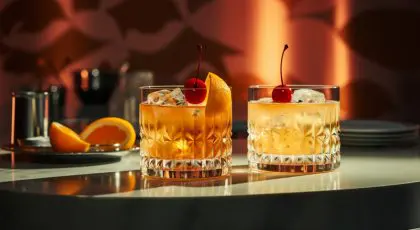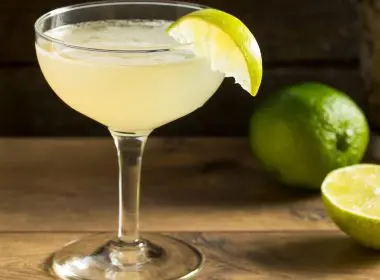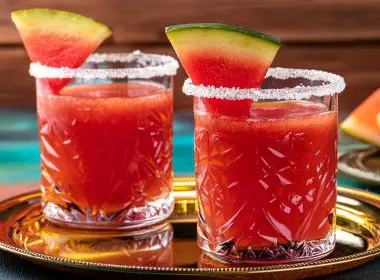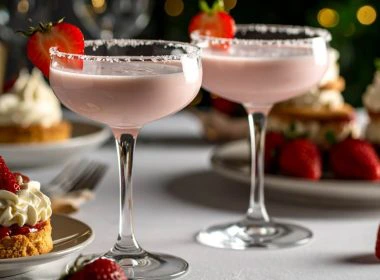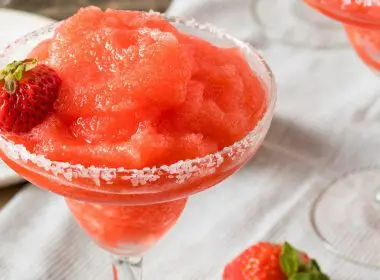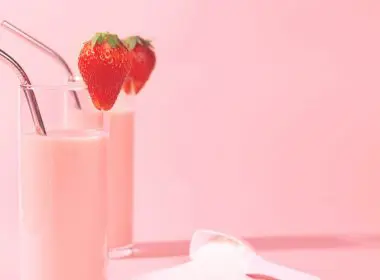How to Use Starch (Aquafaba, Rice & More) in Cocktails
Jump to:
Using starch in cocktails is a simple but innovative technique that can add sweetness, body, texture, and opacity to mixed drinks, resulting in truly unique and delicious creations.
Whether you’re a seasoned pro or just starting out, starch washing is a great way to experiment and expand your cocktail repertoire. Here’s what you need to know about using starches like aquafaba, rice, soy lecithin, and hydrocolloids in cocktails.
What do starches do to a cocktail?
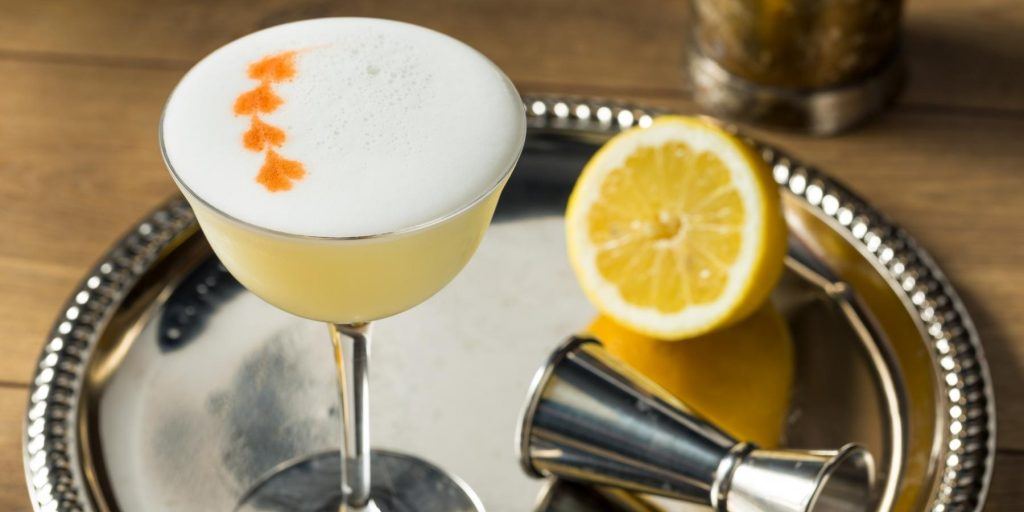
The effect of starch on a cocktail will vary depending on the type of starch used, the amount of starch used, and the other ingredients in the cocktail. However, in general, starch can add sweetness, body, texture, and opacity to cocktails
Flavour. Starch can add a subtle sweetness and body to cocktails. It can also help to tame the harshness of certain spirits. For example, adding a small amount of starch to a Whiskey Sour can help to mellow the whiskey and create a more balanced cocktail.
Texture. Starch gives cocktails a smoother mouthfeel. This can be especially beneficial for cocktails that contain citrus juice or other acidic ingredients, as the starch can help to buffer the acidity and create a more pleasant drinking experience.
Appearance. Starch can also make cocktails appear more opaque and cloudy. This is because the starch molecules scatter light, making it difficult for the light to pass through the cocktail. While this may not be desirable for all cocktails, it can be used to create a unique and visually appealing effect for certain drinks.
You might also like: Fermented Cocktails & Why They’re Growing in Popularity
How to use aquafaba in cocktails
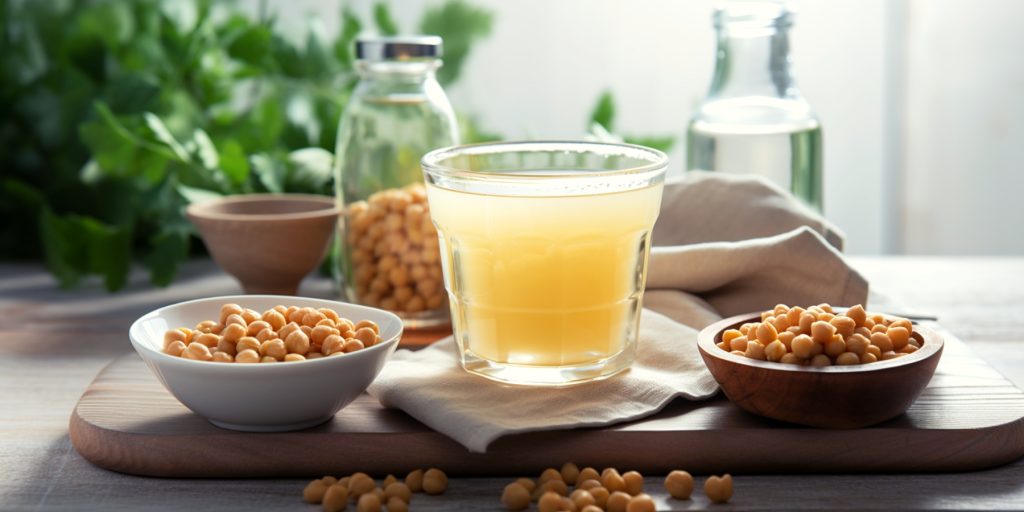
Aquafaba is the liquid that remains after cooking chickpeas or draining tinned chickpeas. It is a vegan substitute for egg whites in cocktails and other culinary applications.
Aquafaba has several properties that make it ideal for use in cocktails. It is a good emulsifier, which means that it can help to bind together different liquids and ingredients. It is also a good foaming agent, which means that it can create a light and airy foam on top of a cocktail. Additionally, aquafaba is flavourless, so it will not alter the taste of the cocktail.
Aquafaba can be used in a variety of different cocktails, including:
- Whiskey Sour
- Clover Club
- Oaxacan Sour
- Coconut Gin Sour
- Pink Lady
- Ramos Gin Fizz
To use aquafaba in cocktails, simply substitute it for egg white in a 2:1 ratio. For example, if a recipe calls for 1 egg white, use 2 tablespoons of aquafaba. To make an aquafaba cocktail, add all the ingredients to a shaker with ice and shake vigorously until well-chilled. Finally, strain the cocktail into a chilled glass and enjoy.
Here are a few tips for using aquafaba in cocktails:
- Use fresh aquafaba for the best results. Aquafaba can be stored in the refrigerator for up to 4 days, but it will thicken over time.
- If your aquafaba is too thin, you can thicken it by whipping it with a whisk or electric mixer until it reaches a stiff peak consistency.
- Add a pinch of sugar or cream of tartar to the aquafaba to help it thicken and foam better.
- If you are using aquafaba in a cocktail that also contains citrus juice, be sure to add the citrus juice after the aquafaba has been whipped or shaken. This will help prevent the aquafaba from breaking down.
Learn more: How to Use Egg Whites in Cocktails | Creamy Vegan Cocktails
How to use rice in cocktails
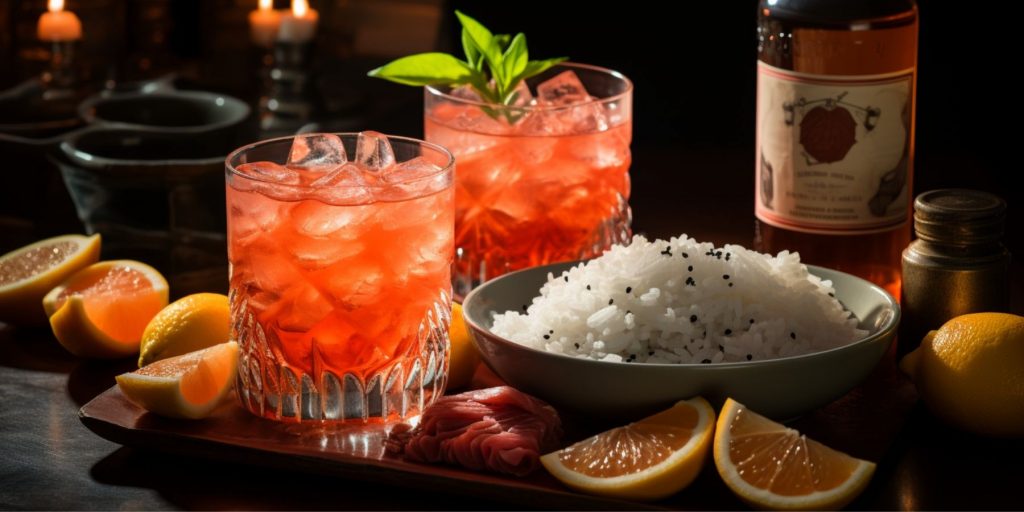
When uncooked rice is stirred with other cocktail ingredients, it releases starch and proteins that bind to the alcohol and other flavours. This helps to create a more cohesive and rounded drink with a smoother mouthfeel. Rice can also help to soften the harshness of some spirits, making them more palatable.
The most common way to use rice in cocktails is through a technique called rice washing. To do this, simply add a tablespoon or two of uncooked rice to the mixing glass with the other ingredients. Stir the cocktail for at least 20 seconds to allow the rice to release its starches and proteins. Then, strain the cocktail into a serving glass, leaving the rice behind.
Rice can also be used in cocktails by infusing it into spirits or simple syrup. This is a more time-consuming process, but it can result in more complex and flavourful drinks.
Some popular cocktails that use rice include:
- Sushi Rice Negroni
- Sake Sour
- Rice-washed Old Fashioned
- Rice-washed Manhattan
- Rice-washed Boulevardier
Tips for using rice in cocktails:
- Use uncooked rice. Cooked rice will not have the same effect.
- Rinse the rice before using it. This will help to remove any excess starch, which can make the cocktail cloudy.
- Use a fine-mesh strainer to remove all the rice from the cocktail before serving.
- Experiment with different types of rice. Different varieties of rice have different starch and protein levels, which can affect the flavour and texture of the cocktail.
Kanpai! The Best Shochu Cocktails & Guide to the Famous Japanese Spirit
How to use soy lecithin in cocktails
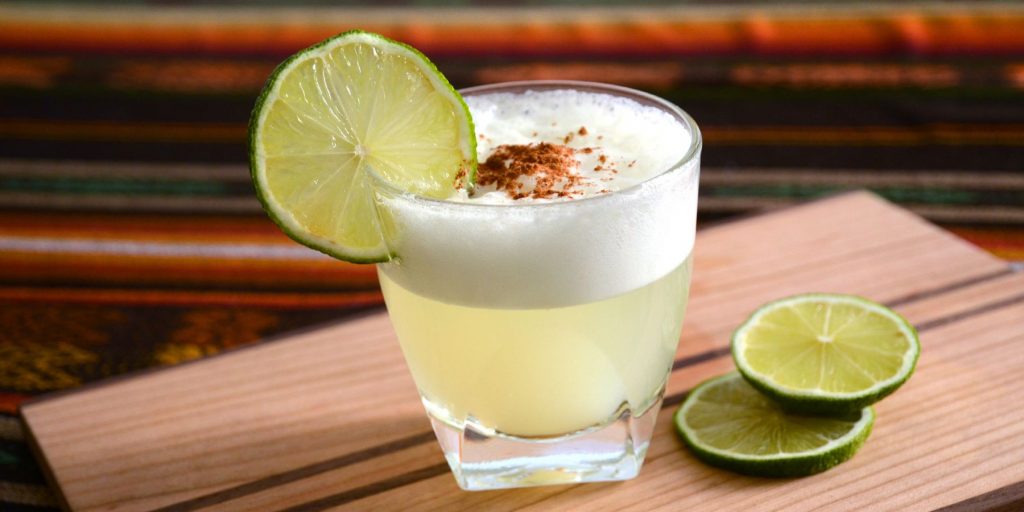
Soy lecithin is a natural emulsifier and stabiliser that is derived from soybeans. It is a common ingredient in food products, but it is also gaining popularity among bartenders for its use in cocktails.
Soy lecithin can be used to create a variety of different effects in cocktails. For example, it can be used to:
- Create a light and airy foam on top of a cocktail.
- Emulsify ingredients that would not normally mix, such as oil and water.
- Stabilise mixtures of ingredients, such as fruit juice and cream.
- Thicken cocktails without making them cloudy.
- Enhance the flavour of cocktails.
To use soy lecithin in cocktails, simply add a small amount to the shaker with the other ingredients. For a light and airy foam, use 0.25% to 0.5% soy lecithin by volume. To emulsify ingredients or stabilise mixtures, use 0.5% to 1% soy lecithin by volume.
Soy lecithin can be used in a variety of different cocktails, including:
Here are a few tips for using soy lecithin in cocktails:
- Use soy lecithin powder for the best results. Liquid soy lecithin can be used, but the result won’t be as foamy.
- Start with a small amount of soy lecithin and add more to taste. Too much soy lecithin can make the cocktail bitter.
- Shake the cocktail vigorously to create a foam.
- Serve the cocktail immediately for the best results.
Cin, cin! 21 Negroni Variations for Negroni Week 2023
How to use hydrocolloids in cocktails
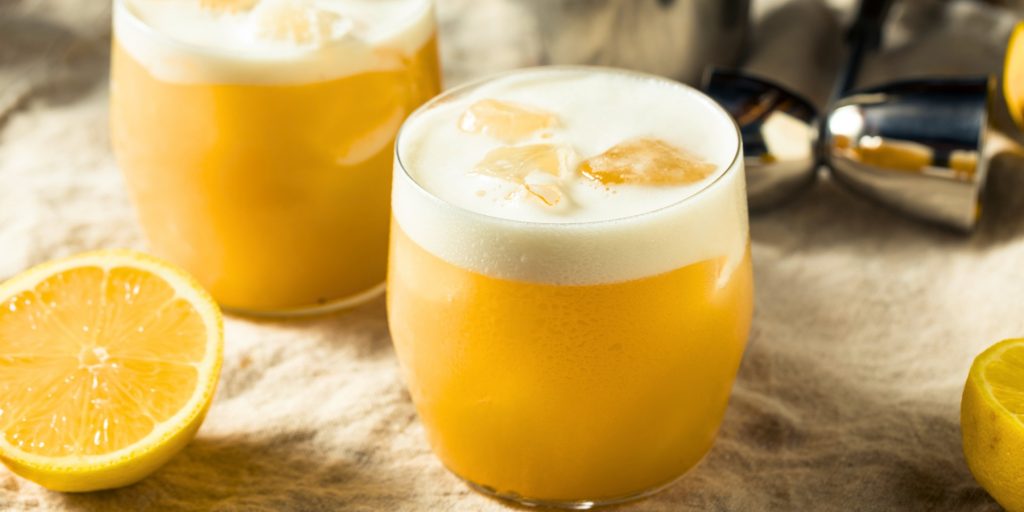
Hydrocolloids are a group of substances that can absorb water and form gels or thicken liquids. They are often used in food and beverage products to improve texture, mouthfeel, and stability.
Hydrocolloids can be used in cocktails to create a variety of effects, such as:
- Thickening cocktails without making them cloudy.
- Creating a smooth and velvety mouthfeel.
- Stabilising foams and emulsions.
- Encapsulating flavours and aromas.
- Creating unique and innovative textures.
Some common hydrocolloids that are used in cocktails include:
Xanthan gum. This versatile hydrocolloid can be used to thicken, stabilise, and emulsify cocktails.
Gellan gum. This hydrocolloid turns into a firm gel when heated and cooled. It is often used to create spheres and other unique textures in cocktails.
Agar-agar. This hydrocolloid forms strong gels at both high and low temperatures. It is often used to create clear gels and foams in cocktails.
Pectin. This hydrocolloid forms gels in acidic environments. It is often used to thicken fruit cocktails and other drinks that contain citrus juice.
Guar gum. This hydrocolloid is similar to xanthan gum, but it is less expensive. It is often used to thicken and stabilise cocktails that contain dairy products.
Hydrocolloids can be used in a variety of different cocktails, including:
Here are a few tips for using hydrocolloids in cocktails:
- Use a small amount of hydrocolloid at first and add more to taste. Too much hydrocolloid can make the cocktail thick and slimy.
- Dissolve the hydrocolloid in water completely before adding it to the cocktail. This will prevent the cocktail from becoming cloudy.
- If you are using a hydrocolloid that forms a gel, such as gellan gum or agar-agar, be sure to follow the instructions on the package.
- Experiment with different hydrocolloids and combinations of hydrocolloids to create your own unique cocktails.
Read next: Jump on the Latest Boba Cocktail Trend with These 3 Cocktails
BONUS! How to use fat in cocktails
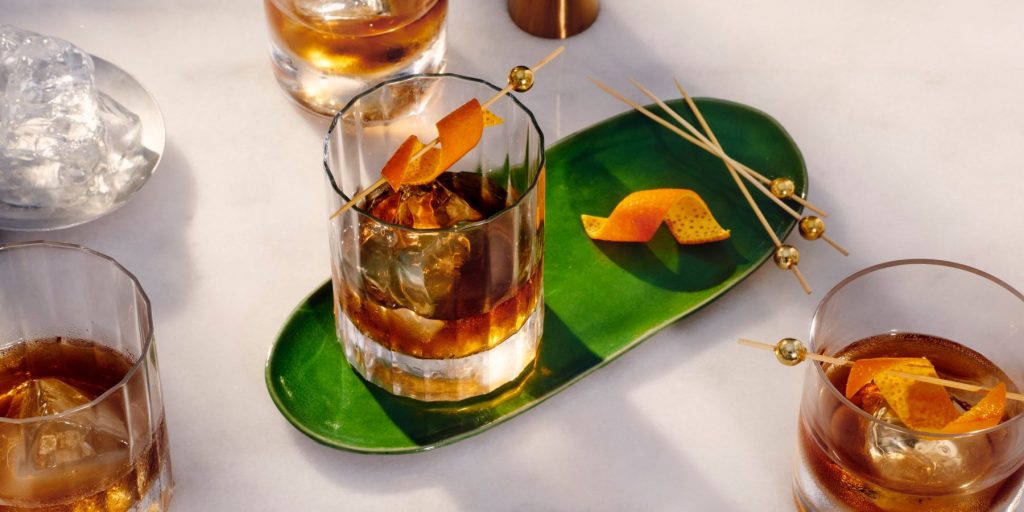
Fat-washing is a technique used by bartenders to infuse spirits with the flavour and aroma of fats. This can be done with a variety of fats, such as bacon fat, butter, coconut oil, and olive oil.
To fat-wash a spirit, simply add the fat to the spirit and let it sit for a period of time, usually overnight. The fat will dissolve into the spirit, extracting the flavours and aromas. Once the spirit has been fat-washed, it can be strained and used to make cocktails.
Fat-washed cocktails have a number of benefits. First, they can add a unique and complex flavour profile to cocktails. For example, a bacon fat-washed Bourbon Old Fashioned will have a smokey and savoury flavour. Second, fat-washed cocktails can have a richer and more velvety mouthfeel. This is because the fat coats the tongue and creates a smoother finish.
Here are a few interesting ideas for fat-washed cocktails:
- Brown butter-washed Old Fashioned
- Coconut oil-washed Rum Runner
- Bacon-fat-washed Mezcal Margarita
- Peanut butter-washed White Russian
Here are a few tips for fat washing:
- Use a high-quality spirit. The quality of the spirit will have a big impact on the flavour of the cocktail.
- Use fresh fat. Old or rancid fat will give the cocktail a bad flavour.
- Strain the spirit carefully. You want to remove all the fat from the spirit before using it to make cocktails.
- Experiment with different fats and spirits. There are endless possibilities when it comes to fat washing.
There you have it—the ABCs of using starch (and fat) in cocktails. Super interesting, right? To get more insights like these, sign up for our newsletter!
